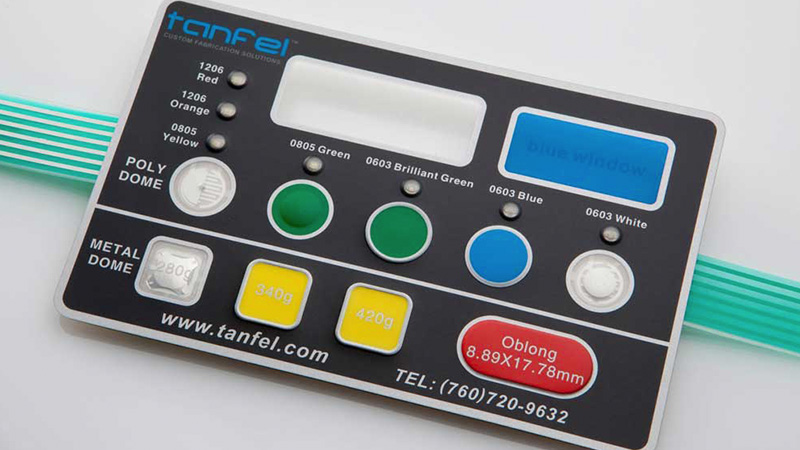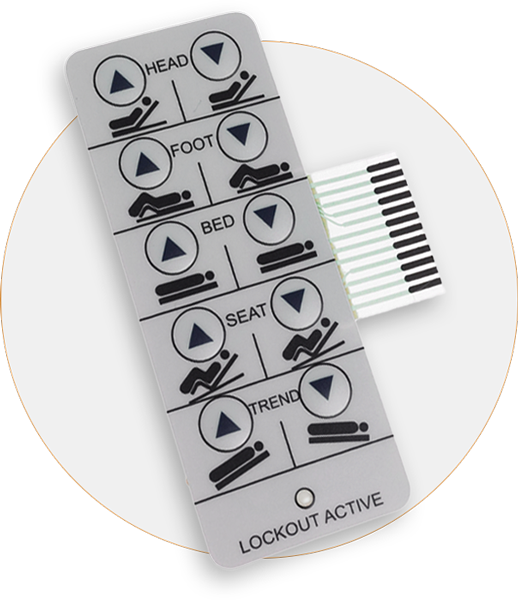How Membrane Layer Switches Over Enhance Individual Experience in Devices
Membrane switches play a pivotal function in improving user experience across various tools by incorporating instinctive layout principles and reliable tactile comments mechanisms. Their capability to offer clear activation feedbacks not only minimizes errors however also instills a feeling of confidence in users. The visual flexibility of these switches contributes to brand identification while making certain capability under varied conditions. As industries increasingly look for options that incorporate resilience with user-centric style, the ramifications of membrane layer changes warrant more expedition to completely value their effect on modern-day innovation.
Improved Tactile Comments
Enhanced tactile feedback in membrane layer changes substantially enhances customer experience by giving clear, receptive interactions. This feedback is essential in applications where accuracy and individual confidence are extremely important, such as clinical gadgets and commercial controls. By incorporating attributes such as responsive domes or increased elements, membrane layer changes allow customers to feel a distinct reaction upon activation, thereby lowering the probability of unintentional inputs.
The assimilation of responsive feedback offers to bridge the void in between the physical and digital worlds, providing customers a comforting confirmation of their activities. This interaction not just fosters a feeling of control yet likewise decreases the cognitive load, as individuals can depend on their sense of touch to navigate with different functions. Improved tactile comments can lead to boosted efficiency, as drivers can carry out commands swiftly without requiring to visually verify each action.

In addition, the reliability of tactile responses in membrane switches adds to overall product usability. When individuals can intuitively engage with a gadget, it cultivates a more positive communication, bring about greater fulfillment and commitment. Thus, the application of enhanced responsive responses is an important consideration for developers intending to boost the user experience within their products.
Improved Looks and Layout
Aesthetic appeal plays an important duty in the capability and bankability of membrane switches. These switches provide a smooth assimilation of kind and feature, permitting manufacturers to create visually striking interfaces that enhance user interaction. With adjustable styles, colors, and structures, membrane switches can be tailored to align with brand identity and item visual appeals, making them an appealing option for various applications.

Moreover, making use of premium materials and printing strategies makes certain that the aesthetic aspects remain lively and intact in time, reinforcing the total high quality of the gadget. By prioritizing looks in membrane layer switch layout, makers can considerably enhance the customer experience, promoting a positive psychological connection between the customer and the gadget while advertising brand name loyalty.
Raised Toughness and Durability
Past their visual charm, membrane layer buttons are recognized for their boosted sturdiness and longevity, making them a functional choice for a large range of applications. Constructed from durable materials such as polyester or polycarbonate, these buttons can endure rough environmental problems, including direct exposure to moisture, dirt, and chemicals. This resilience is vital for devices made use of in commercial, clinical, and outside settings, where devices is often based on rigorous use.
Membrane layer switches are likewise much less vulnerable to mechanical failure contrasted to conventional mechanical buttons. The lack of moving components reduces the possibility of damage, thus prolonging the operational life expectancy of the tool. Additionally, their sealed layout prevents pollutants from getting in the button, even more improving dependability.

Simplified Individual Interaction
Three crucial factors add to the simplified user communication provided by membrane layer switches: user-friendly style, responsive comments, and adjustable designs. The instinctive layout of membrane layer switches over permits customers to promptly recognize and browse the user interface without substantial training. This user-centric technique makes sure that controls are practically prepared, promoting convenience of usage and minimizing the cognitive tons on individuals.

In addition, personalized designs allow suppliers to tailor the user interface to certain applications and individual needs. By enabling the integration of personalized icons, shades, and button setups, membrane switches can be made to match the demands of diverse individual demographics, improving functionality and accessibility. Jointly, these elements contribute to a streamlined communication experience, making membrane switches a favored choice for tools focused on boosting individual complete satisfaction and functional effectiveness.
Versatile Applications Across Industries
The benefits of membrane changes expand beyond streamlined individual communication, finding applications throughout a wide range of sectors. In the health care field, they are utilized in clinical devices such as analysis tools and infusion pumps, where integrity and ease of cleaning are extremely important. Membrane switches over provide a durable user interface that can endure the roughness of a clinical atmosphere while making certain user-friendly procedure.
In the customer electronics industry, these buttons are prevalent in home devices, pc gaming devices, and push-button controls, supplying a sleek, contemporary visual paired with resilience. Their low-profile design permits suppliers to create compact and fashionable tools without compromising performance.
Additionally, the auto sector uses membrane layer buttons for dashboard controls and infotainment systems, boosting the customer experience by supplying tactile responses and intuitive navigation. The industrial industry additionally advantages, with membrane layer Visit Website changes featured in machinery and control panels, ensuring efficient operation in often harsh problems.
Ultimately, the flexibility of membrane layer switches makes it possible for a large range of applications, improving individual experience across diverse areas by incorporating performance, toughness, and design flexibility. As industries remain to advance, the need for these ingenious interfaces is likely to expand even better.
Verdict
Finally, membrane layer switches over substantially improve user experience by giving enhanced tactile responses, visually pleasing designs, increased longevity, and streamlined customer communication (membrane switch). Their flexibility throughout different industries emphasizes their significance in modern tool design. The mix of these characteristics not just assists in intuitive engagement yet also makes certain a trustworthy performance, making membrane layer switches an essential element in the growth of easy to use modern technology. Continued next technology in this field will certainly better elevate the requirements of user communication in future applications.